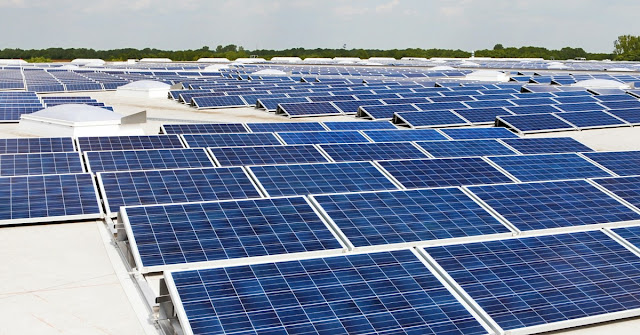What is Climate Finance?
Climate finance refers to the financial resources and investments directed toward mitigating and adapting to the adverse impacts of climate change. This includes funding projects, programs, and initiatives aimed at:
- Mitigation: Reducing greenhouse gas (GHG) emissions (e.g., renewable energy, energy efficiency).
- Adaptation: Strengthening resilience to climate change impacts (e.g., infrastructure for water management, coastal protection).
Climate finance is critical for achieving global climate goals, including the Paris Agreement target of limiting global warming to 1.5°C. It is often facilitated by public, private, and multilateral financial institutions and mechanisms like the Green Climate Fund (GCF), Climate Investment Funds (CIF), and national climate budgets.
Strategies and Roadmaps for Developed and Developing Countries
1. Developed Countries
Developed nations play a leading role in providing climate finance due to their historical responsibility for emissions and economic capabilities. Key strategies and roadmaps include:
a. Fulfilling Financial Commitments
- Achieve the $100 billion/year climate finance target promised under the Paris Agreement to support developing countries.
- Increasing transparency on financial flows through frameworks like the OECD Climate Finance Reports.
b. Green Energy Transition
- Decarbonize economies by adopting large-scale renewable energy projects (wind, solar, hydrogen).
- Increase investments in R&D for next-generation technologies, including carbon capture, storage (CCS), and clean hydrogen economies.
c. Private Sector Involvement
- Encourage private capital mobilization by creating incentives such as green bonds, blended finance, and tax rebates.
- Promote sustainable financial products like ESG-linked investments and climate risk-adjusted portfolios.
d. Regulatory Roadmaps
- Implement carbon pricing mechanisms (carbon taxes, cap-and-trade systems).
- Enforce Climate Disclosure Regulations to ensure businesses report climate-related financial risks.
- Align financial flows with Net Zero by 2050 commitments through sector-specific roadmaps (e.g., transport, industries, agriculture).
e. Support for Innovation and Technology Transfer
- Invest in climate innovation hubs to develop advanced solutions in renewable energy, EVs, and carbon-neutral industries.
- Facilitate technology transfers and capacity-building initiatives for developing nations.
Examples of Roadmaps:
- European Union’s Green Deal: Aiming for climate neutrality by 2050.
- USA Inflation Reduction Act: Significant funding for clean energy infrastructure and technology.
- Japan’s Green Growth Strategy: Focused on hydrogen and decarbonization of key sectors.
2. Developing Countries
Developing nations face greater climate vulnerabilities and require financial and technical support to implement strategies. Key areas include:
a. Access to Climate Finance
- Secure funding through global mechanisms like the Green Climate Fund, Adaptation Fund, and concessional loans.
- Mobilize bilateral and multilateral funds for sustainable infrastructure, agriculture, and energy transition.
b. National Adaptation Plans (NAPs)
- Develop and implement tailored National Adaptation Plans to address sector-specific climate impacts (e.g., agriculture, water resources, disaster preparedness).
c. Just Transition to Renewable Energy
- Focus on decentralized renewable energy systems such as solar microgrids and wind parks for rural electrification.
- Incentivize investment in clean energy while avoiding a sharp economic divide caused by energy transitions (Just Transition principles).
d. Nature-Based Solutions
- Promote afforestation, reforestation, and sustainable land-use practices to sequester carbon.
- Leverage solutions like mangrove restoration and wetlands preservation for coastal and flood protection.
e. Strengthening Financial Systems
- Develop domestic green financing frameworks (green bonds, sovereign climate bonds).
- Set up national climate funds and carbon markets to attract private investments.
f. Technology and Capacity Building
- Prioritize capacity-building programs to enhance technical know-how for managing renewable energy and climate infrastructure.
- Foster technology partnerships to reduce dependency on imported solutions.
Examples of Roadmaps:
- India’s National Hydrogen Mission and renewable energy targets (500 GW capacity by 2030).
- Kenya’s Green Economy Strategy: Achieving climate resilience and sustainable economic growth.
- Brazil’s REDD+ Program: Reducing emissions from deforestation and forest degradation.
Upcoming Timelines
Short-term (2025):
- Developed countries must scale up climate finance flows to meet the $100 billion annual target.
- Developing countries to finalize and operationalize Nationally Determined Contributions (NDCs) under the Paris Agreement.
- Global adoption of climate disclosure and ESG reporting standards.
Medium-term (2030):
- Achieve 50% emissions reduction targets for developed countries and implement Just Transition frameworks in developing nations.
- Integrate renewable energy, EVs, and clean fuels into national energy grids.
- Full-scale adoption of Climate Resilient Infrastructure in vulnerable regions.
Long-term (2050):
- Developed nations to achieve Net Zero emissions goals.
- Developing nations to close adaptation gaps and achieve climate-resilient, low-carbon economies.
- Establish a fully functional Global Climate Financial System aligned with equity principles.
Conclusion
Climate finance is an essential pillar for achieving global climate goals. Developed countries must prioritize meeting their financial and technical obligations, while developing nations must design localized, inclusive roadmaps to tackle climate impacts. Partnerships, technology transfer, innovative financial mechanisms, and policy integration are key enablers for bridging the global climate finance gap.






Comments
Post a Comment